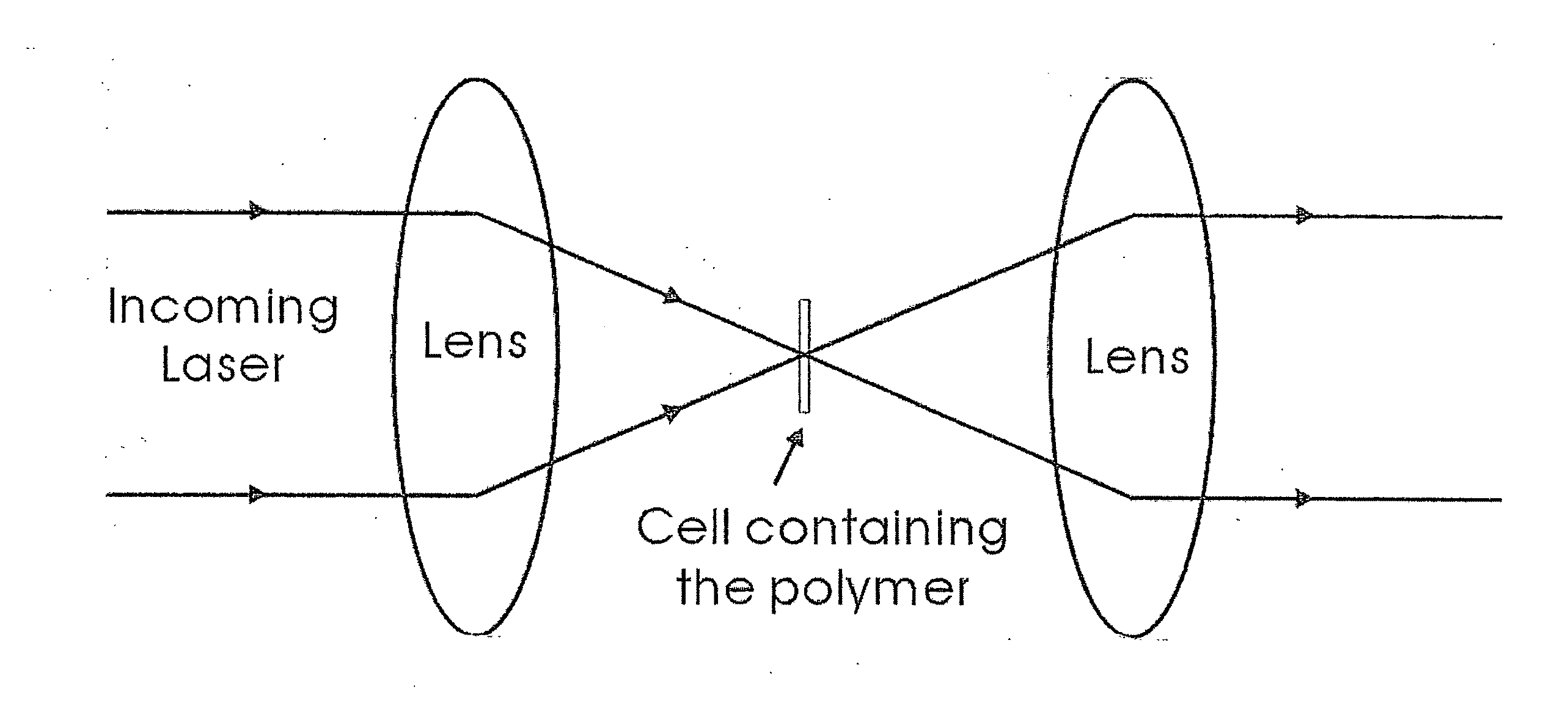Polymers responsive to radiation pressures
a technology of radiation pressure and polymer, applied in the field of polymers, can solve the problems of narrow imaging field, inability to provide blind spot protection, irreversible damage to human vision,
- Summary
- Abstract
- Description
- Claims
- Application Information
AI Technical Summary
Benefits of technology
Problems solved by technology
Method used
Image
Examples
examples
[0040]A container having an interior width of 180 μm in the direction parallel to a light beam adapted to be passed through the container and walls having a thickness of 280 μm was filled with a composition comprising linear PNIPAM polymer having a molecular weight of 3.95×107 g / mol weight average at a concentration of 10 mg / mL in D2O. A laser having a wavelength of 1064 nanometers and a power of 224 mW was turned on and a beam of light therefrom was directed through the container and the composition therein. The radiation pressure of the laser was about 285×105 W / cm2. As illustrated in FIG. 1A, the focus of the laser light passing through the container and composition was imaged by a CCD camera equipped with a neutral density filter. It was determined that no PNIPAM precipitated particles were formed at time zero. A second experiment was also conducted utilizing a laser having a wavelength of 532 nanometers and a power of 25 mW, which gave a radiation pressure of 32×105 W / cm2. Simi...
PUM
 Login to View More
Login to View More Abstract
Description
Claims
Application Information
 Login to View More
Login to View More - R&D
- Intellectual Property
- Life Sciences
- Materials
- Tech Scout
- Unparalleled Data Quality
- Higher Quality Content
- 60% Fewer Hallucinations
Browse by: Latest US Patents, China's latest patents, Technical Efficacy Thesaurus, Application Domain, Technology Topic, Popular Technical Reports.
© 2025 PatSnap. All rights reserved.Legal|Privacy policy|Modern Slavery Act Transparency Statement|Sitemap|About US| Contact US: help@patsnap.com



